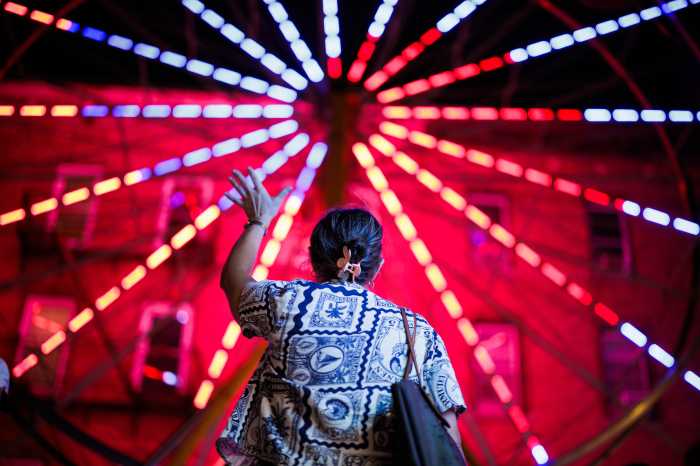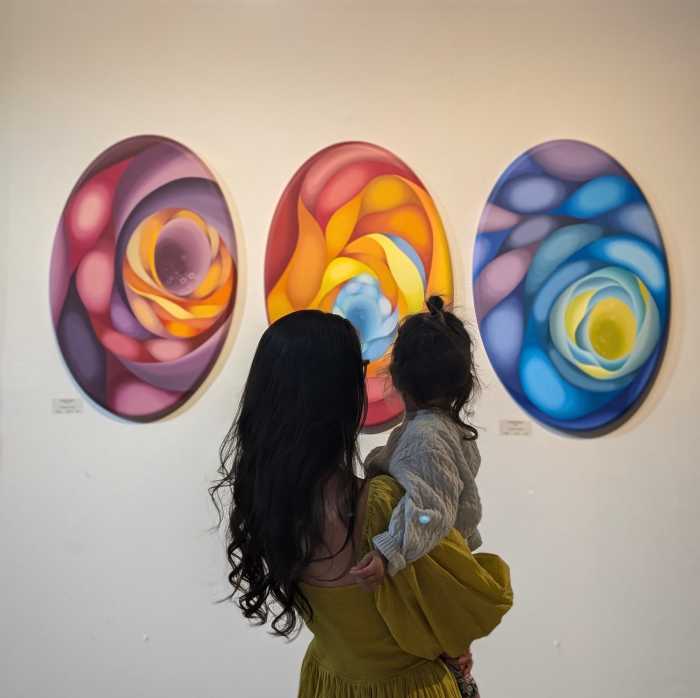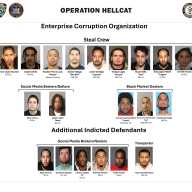By The Greater Astoria Historical Society
Francis Xavier Bushman was a film and television actor whose career flourished during the silent film era. Born in Baltimore in 1883, he was perhaps best known for the role of Romeo in the 1916 Metro Pictures production of “Romeo and Juliet” as well as that of Messala in the 1925 silent epic “Ben-Hur: A Tale of the Christ.”
Touted in his heyday as “The Handsomest Man in the World,” the strapping Bushman lived in Little Neck early in his career while working as a sculptor’s model. In later years, he appeared in television shows, including “Batman” and “Perry Mason.” He died in 1966 in Pacific Palisades, Calif., and is interred alongside numerous other Hollywood stars in Forest Lawn Memorial Park Cemetery.
Bushman took up two activities early in his life that would later define his public persona: acting and body building. Although his father wanted him to be a doctor, the young man with the finely sculpted physique developed a passion for acting in his early years and appeared in stage productions in the Baltimore area.
After attending Ammendale Normal Institute in Maryland, the aspiring actor moved to New York City, where he made his Broadway debut in 1908. On the side he also did modeling, occasionally in the nude. His big break came in 1911, when he was noticed by the now-defunct Essanay Studios while acting in Chicago.
In his meteoric rise to the top, the former Queens resident starred in Essanay and Metro Pictures silents, including the 1915 comedy “The Slim Princess,” as well as the lost drama “A Million a Minute” the following year. The crowning achievement of his early career, however, may have been in the role of Romeo in the 1916 production of “Romeo and Juliet,” which he also co-directed.
His lavish acting salary enabled him to build a home on Hollywood Boulevard, which he later donated to Sid Graumann, whose famous Chinese Theater now occupies the spot. Lauded by a contemporary critic as “the best known face and name in the world,” life at the top was not without scandal. Bushman was the talk of the town when he left his first wife for “Romeo and Juliet” costar Beverly Bayne in 1918.
After the chiseled actor and his new bride left Metro, however, the Baltimore native’s career took a precipitous dive. By the early 1920s, the industry papers wrote him off as washed up. He staged a spectacular comeback in MGM’s 1925 production of “Ben Hur,” but was soon blacklisted by the studio, allegedly after a falling out with studio executive Louis B. Mayer. His fortune, once in the millions of dollars, was all but wiped out by the Wall Street crash as the curtain closed on the Roaring Twenties. Bushman would have to find another act.
The former idol lived by the motto “Take things as they come, fear nothing and nobody.” Swallowing his pride, he took small acting roles on stage and screen and later on television. In the 1930s and ’40s, Bushman even ventured into the world of radio by lending his voice to the CBS series “Those We Love.” He made a cameo in the 1951 thriller “Hollywood Story,” and later earned small roles in TV series including “Peter Gunn,” “The Many Loves of Dobie Gillis” and “Perry Mason,” where he played a murder victim in two 1960 episodes.
In 1966, Bushman made a guest appearance in a two-part “Batman” episode as a silent film connoisseur and film festival promoter stalked by The Riddler.
The screen idol of days gone by died of a heart attack weeks after filming. Although much of his silent film work has been lost to time, his multifaceted acting career spanning six decades and his gritty determination in the face of adversity are an inspiration to actors and film buffs.
For more information, call 718-278-0700 or visit astorialic.org.


































